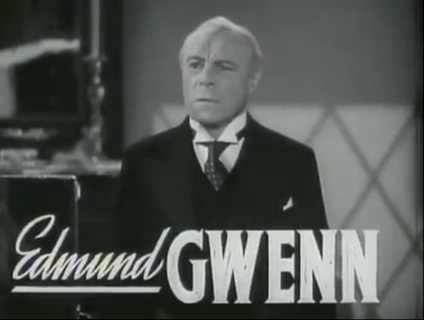



















































Well… I got some new trailers.

Over at The Current, I’ve contributed the opening salvo to a series of pieces on the vampire — in what is known as august company, with Geoffrey O’Brien, Phoebe Chen, Angelica Jade Bastién, and Beatrice Loayza. I tackle Lugosi. Quite a challenge.
The pieces are here.
As a taster, here’s a passage I was sorry to cut, but to make the focus on Bela rather than Tod Browning, it had to be done:
“Browning’s best effects are all next-door to incompetence: he has a disconcerting way of undermining our comfortable certainty about how many characters are in a scene, using mirrors, occluding walls, and surprise angle changes, so that, when Dracula’s failure to appear in a mirror is first shown, the effect is familiar: every scene with a cut in it has had the same effect. When the very nervous Helen Chandler begins conversing telepathically with her undead suitor, the conversation has a disjointed quality we’ve already come to know well.”

OK, so Gillermo Del Toro’s Cabinet of Curiosities delivered two stunningly bad takes on Lovecraft yesterday, all sound and fury, signifying more sound and fury. Within minutes I could tell each one was going to be leaden. Pickman’s Model buried the story in irrelevant self-mutilations and was among Lovecraft’s least filmable works anyway — even Nyarlathotep would do better as basis for a scenario — since it’s about unbelievably horrible paintings. Imagine – some poor commercial artist had to try to produce paintings so repulsive they warp the mind of the onlooker.
Now, admittedly, Albert Lewin’s THE PICTURE OF DORIAN GRAY managed to come up with a rotting portrait equal to Wilde’s conception, or near enough. But what Lovecraft seems to be requiring is beyond even that.
While Pickman’s Model falls into all the inadequacies the story’s nameless narrator credited himself with, in his strained attempts to mimic Pickman’s morbid style, and adds grotesquely amplified squelching sounds in a last-ditch effort to gross us out, Dreams in the Witch House starts out at peak volume and proceeds further and further over the top as it goes on. Actually, it starts with the Shostakovich waltz from EYES WIDE SHUT, thereby proving that the filmmakers have no interest in being original.

Altogether more agreeable to me is DAUGHTER OF HORROR, the film playing in the movie theatre in THE BLOB (version originale) and its director-approved first cut, DEMENTIA. John Parker’s not-quite-a-feature (well, I guess it’s around the same runtime as SHERLOCK JR…)
DEMENTIA is completely wordless, apart from the printed text of the credits. DAUGHTER OF HORROR had a hammy voiceover added, spoken by Ed McMahon, thereby subtract (in part) the film’s USP. The narration just makes everything more obvious, and the story of a man-killing sex worker already has a somewhat rote symbolism to it. The imagery and George Antheil’s score (with vocals by Marni Nixon) provide all the exposition we need.


As a wordless film I thought it sort of less interesting than Ray Milland’s THE SAFECRACKER Russell Rouse’s THE THIEF. In DEMENTIA, we see people talking but we don’t hear them — the suggestion is we’re never close enough. In the Rouse film, nobody talks to him and he’s party to no conversations, and the sense of loneliness created is quite striking. DEMENTIA could have done with that. But the absence of dialogue takes it closer to dream, which is the goal.
Possibly the only movie whose origin lies in a dream recounted by the director’s secretary — John Parker went on to cast Adrienne Barrett in the movie, which seems only fair: It’s your nightmare, now live it.


You could group the film with oddities like ERASERHEAD, SPIDER BABY, CARNIVAL OF SOULS, NIGHT TIDE. Outsider art that’s horror-movie adjacent without quite committing itself — more disturbing because less definable. If the opening scenes, where Barrett walks through a skid row hellscape of varying forms of male oppression towards women, have some of the hectoring obviousness of a commercial, it’s nonetheless all strikingly shot: Parker is determined not to allow a flat or ordinary image into his movie. It’s all expressionist gloom and cartoony forced angles, with continuity and naturalistic behaviour alike sacrificed to the jazzy morbidity.

Packing visual pleasure into every frame, the film nevertheless feels like one of those nightmares where you’re running without making progress — the 56 minutes never seems to end, until of course it does. But that seems entirely appropriate, even if it’s not a sensation you could call enjoyable. When a sleazy guy throws a dress at Barrett and all at once she’s wearing it, we seem to have entered the visual language of, not the horror film or noir (the Venice, California locations prefigure TOUCH OF EVIL) but the musical, and the film’s unending vibe aligns with those distended Gene Kelly ballet sequences which threaten to overflow the movies they’re part of.
The ensuing nightclub scene made me think of SIMON OF THE DESERT, that other underweight surrealist fever dream, and its new York conclusion — are they dancing the Radioactive Flesh? And is that Shelly Berman? It is!


SIMON is it — the perfect double feature pairing for DEMENTIA. When the money ran out, Bunuel’s producer considered showing SIMON with Renoir’s PARTIE DE CAMPAGNE. No. (Great though the Renoir is.) This is the one. Am I too late with that blinding insight?













